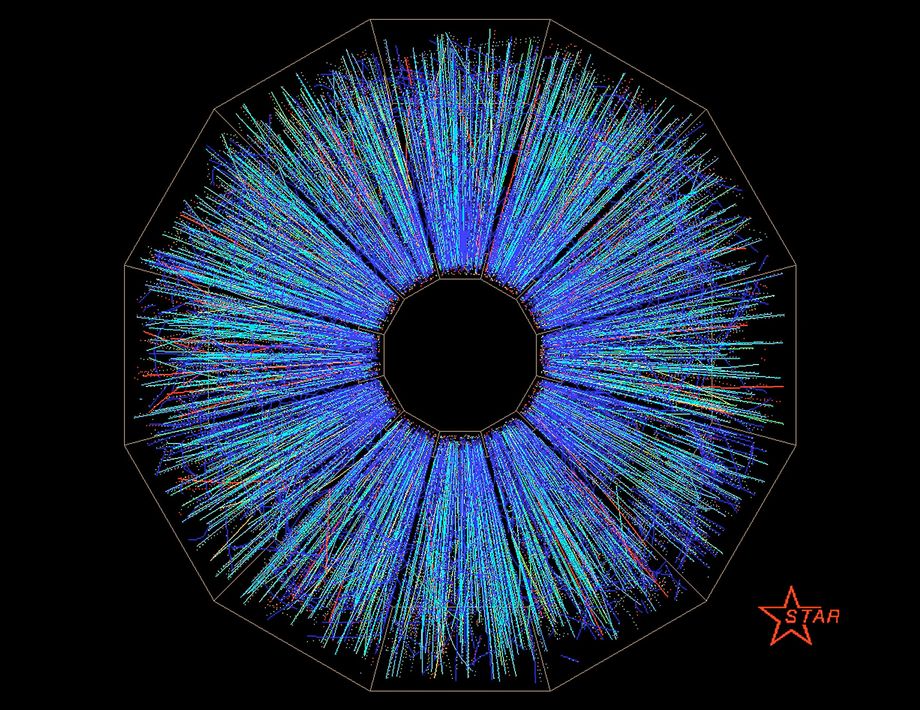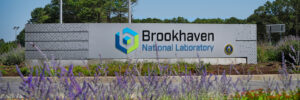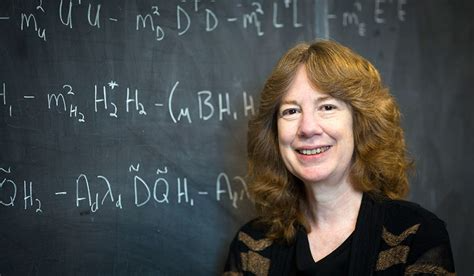The Science Driving Particle Physics and Big Accelerators
JoAnne Hewett
Director, Brookhaven National Laboratory
Sponsored by PSW Science Members Erica & Bruce Kane
About the Lecture

Particle physics explores the smallest constituents of matter and energy, revealing the profound connections underlying everything we see in our vast and complex universe.
Past successes in particle physics have revolutionized our understanding of the universe and prompted a new set of questions. Collectively, these questions have spurred the construction of state-of-the-art facilities, from particle accelerators to telescopes, that will illuminate the connections between the very small and the very large. Major advances in accelerator design and technology are central to realizing some of the most ambitious scientific goals. Now, more than ever, particle physics is a global endeavor. The full breadth of the field’s most urgent scientific questions can be best addressed when world-class facilities are located around the globe, in partnership between nations. This lecture will describe the decadal vision laid out in the recent national strategic plan for particle physics, how it dovetails with global endeavors, and how it places the nation on the threshold of a new era of insight and discovery.

About the Speaker

JoAnne Hewett is director of the Brookhaven National Laboratory (BNL/BSA) and president of Brookhaven Science Associates (the Stony Brook University – Battelle that manages the Lab for DOE’s Office of Science), and she is Professor in the Department of Physics and Astronomy and the C.N. Yang Institute for Theoretical Physics at Stony Brook. She is also the chairperson of DOE and NSF’s High Energy Physics Advisory Panel (HEPAP) and Ex Officio member of the 2023 Particle Physics Project Prioritization Panel (2023p5). Before joining Brookhaven, she was Associate Lab Director for Fundamental Physics and Chief Research Officer at SLAC and Professor of Particle Physics at SLAC and Stanford.
As Director of BNL/BSA, JoAnne oversees a team of more than 2,800 scientists, engineers, technicians, and professionals working to address challenges in nuclear and high energy physics, clean energy and climate science, quantum computing, artificial intelligence, photon sciences, isotope production, accelerator science and technology, and national security.
JoAnne’s research is on the fundamental nature of space, matter, and energy. Some of her best known work is in theoretical physics beyond the Standard Model of particle physics and how to design experiments to explore its predictions.
Among other honors and awards, JoAnne is a Fellow of the American Association for the Advancement of Science and the American Physical Society, and she served as chair of the American Physical Society’s Division of Particles & Fields.
She earned a BS in Physics and Mathematics at Iowa State, an MS in Physics at UC Irvine, and a PhD in Physics at Iowa State.
Minutes
On December 6, 2024, Members of the Society and guests joined the speaker for a reception and dinner at 5:45 p.m. in the Members’ Dining Room at the Cosmos Club. Thereafter they joined other attendees in the Powell Auditorium for the lecture proceedings. In the Powell Auditorium of the Cosmos Club in Washington, D.C., President Larry Millstein called the lecture portion of the 2,506th meeting of the Society to order at 8:07 p.m. ET. He began by welcoming attendees, thanking sponsors for their support and announcing new members. Scott Mathews then read the minutes of the previous meeting which included the lecture by Jun Ye, titled “The Nuclear Clock: Scaling Quantum Systems for Precision Metrology”. The minutes were approved pending a minor correction.
President Millstein then introduced the speaker for the evening, JoAnne Hewett, Director of the Brookhaven National Laboratory. Her lecture was titled “The Science Driving Particle Physics and Big Accelerators”.
The speaker began by presenting an image of a single event at the Relativistic Heavy Ion Collider, the result of a collision between two gold ions, showing the shower of hundreds, or perhaps thousands of individual particles detected after such a collision. She indicated that this was the level of complexity associated with accelerator experiments; tracking the energy and momentum of each particle produced in the collision. Hewett went on to describe some of the basic ideas and terminology of particle physics and accelerator experiments. She described how interactions in quantum field theory can be represented graphically by Feynman diagrams. She presented the standard model of particle physics, including a table of the 16 fundamental particles and the mathematical equation describing the interactions between these particles. Hewett described some of the outstanding questions about the standard model: “What is the purpose of the second and third generations of particles?”, “Why is the top quark so massive?”, “How do quarks and gluons behave inside a proton?”
The speaker then presented a brief history of the Higgs boson, how it was predicted, how it was discovered, and how the science of particle accelerators enabled its discovery. She described how the Higgs was observed in the LHC at CERN by observation of its smallest decay mode: decay into two photons. Hewett explained that while the confirmation of the Higgs was the final piece in the standard model, several big questions remain: particularly the questions of dark matter and dark energy. She stated that “When you receive an answer to a question, it often leads to further inquiries or new areas of exploration.” Hewett gave a list of several outstanding questions in particle physics, including:
• Why are there so many kinds of particles?
• What is the nature of neutrinos?
• What stabilizes the mass of the Higgs?
• Why is there more matter than antimatter?
• Are there extra dimensions?
• Do the forces unify?
The speaker presented some of the details of the 2023 Particle Physics 10-year Strategic Plan, including the three “Science Drivers” it identified. These included:
• Decipher the Quantum Realm- by revealing the mysteries of the neutrino and the Higgs
• Explore New Paradigms in Physics- by searching for new particles and new quantum phenomena
• Illuminate the Hidden Universe- by determining the nature of dark matter and cosmic evolution
Hewett then presented a list of 25 specific experiments recommended in the 10-year plan; several pre-existing, several currently under construction, and several planned for the next decade. She indicated that some of these experiments were “smaller scale”, requiring relatively small investments, and several were “huge colliders, that are multi-billion dollars”. The speaker gave details about some of these experiments, including:
• A near-term upgrade to the LHC
• A number of near-term experiments on dark matter and dark energy
• A near-term domestic facility for neutrino experiments
• A far-term off-shore Higgs factory
• And a far-term multi-TeV collider
Hewett discussed some of the fundamental questions about neutrinos, including the Majorana nature of the particle, the mass hierarchy, the existence of sterile neutrinos, and possible CP violation in the neutrino sector. She discussed the search for Dark Matter, including the 36 order of magnitude mass spectrum, the use of quantum sensors, the search for WIMPs (weakly interacting massive particles), and the irreducible background due to solar neutrinos. She discussed the search for dark energy, including the Rubin Observatory in the Atacama Desert which will acquire high resolution images over a period of ten years. And last, she discussed upcoming collider experiments, including increasing the luminosity of the LHC by a factor of 5 to 7, an electron-ion collider under construction at the Brookhaven National Lab, and an international accelerator facility still in the planning stages, possibly to be constructed in Japan, which may be either a linear collider or a circular collider. Hewett briefly discussed the advantages and disadvantages of these two collider configurations.
Hewett ended her talk by saying that it will require a broad suite of experiments to probe and unlock the secrets of the universe.
The lecture was followed by a Question and Answer session:
A member asked if there were plans for collaboration between CERN and Brookhaven. Hewett responded that Brookhaven is already the US coordinator for collaborations at CERN’s ATLAS detector and that CERN has already agreed to participate in several aspects of the electron-ion collider at Brookhaven.
A member asked whether there were plans for a muon collider. Hewett indicated that muon colliders were relatively far in the future, but that one of the experiments listed in the 10-year plan was, in fact, capable of creating muon collisions. She estimated that such a collider would not begin construction until about 2040 or 2050.
A guest asked about the plausibility of cosmological theories that did not include dark matter or dark energy. Hewett responded “I have not yet seen a paper that was plausible all the way through, from start to finish.”
A viewer on the live stream asked whether super-symmetry had been ruled out by TeV experiments at the LHC. Hewett responded that this was a complicated question, and that there were several ways super-symmetry could hide at the LHC. She said that while no evidence has been found for super-symmetric particles at the current energy range, they could exist at higher energies, just outside the current range of the LHC.
A member asked Hewett to predict which experiment would produce the next big result in the field. Hewett responded, “Rubin!”.
After the question and answer period, President Millstein thanked the speaker and presented her with a PSW rosette, a signed copy of the announcement of her talk, and a signed copy of Volume 1 of the PSW Bulletin. He then announced speakers of up-coming lectures, made a number of housekeeping announcements, and invited guests to join the Society. He adjourned the 2,506th meeting of the society at 9:35 p.m. ET.
Temperature in Washington, DC: -0.5° Celsius
Weather: Fair
Audience in the Powell auditorium: 46
Viewers on the live stream: 46
For a total of 92 live viewers
Views of the video in the first two weeks: 677
Respectfully submitted, Scott Mathews: Recording Secretary